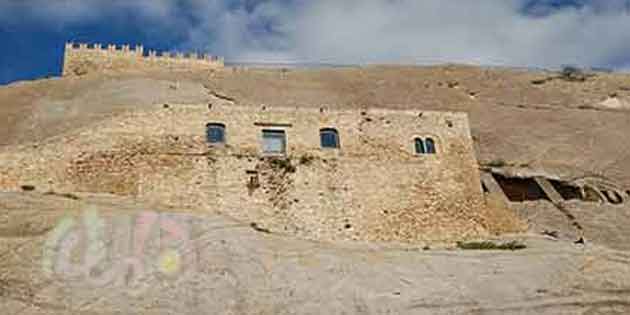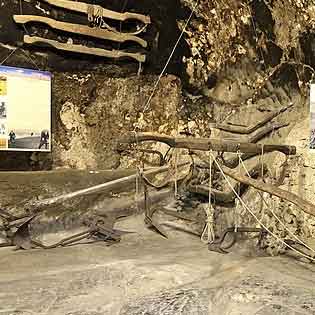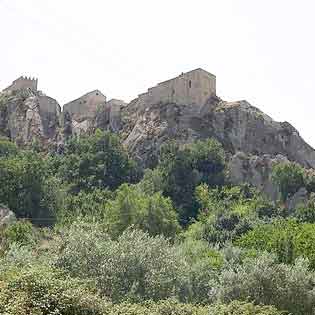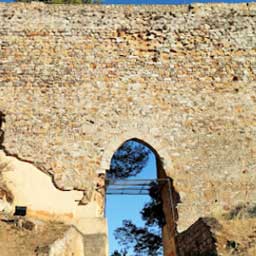Sperlinga Rock castle
The Sperlinga Castle is a suggestive construction partly excavated, partly perched on the majestic sandstone cliff overlooking the town of Sperlinga . The castle, dug into the sandstone rock, was obtained from a single monolith above caves of sacred temples dating back to 4,000 years ago.
The rock basement of the castle was structured by the indigenous Sicilian populations, in where the caves dug into the rock were used as sepulchers. The first historical sources date back to the medieval period, to 1081. The Castle was particularly important in 1282, during the war of the Sicilian Vespers, which saw the inhabitants of the region rebel against the Angevin domination. It was in fact the only stronghold in which the Angevins found shelter from the Sicilians in revolt, who came to besiege the Castle. In memory of the fact, an epigraph remains on the lintel at the entrance to the fortress, which reads: "Quod Siculis placuit sola Sperlinga negavit - What pleased the Sicilians was denied by Sperlinga alone". Over the centuries, several families took over the leadership of the castle, in particular the Ventimiglia, the Forti Natoli, the Oneto and the Li Destri who in 1973 ceded the property to the Municipality with a notary deed so that it could be enhanced and made usable.
The castle does not have a uniform or regular plan: it is made up of many buildings distributed over different heights. It has an oblong plan of about 200 meters in length and a width of only 15 meters.
The castle is accessed via a drawbridge halfway up the cliff, on whose façade the supporting brackets are visible and the long slits where the winches ran. On the body of the entrance there are two rooms without a roof and one of the perimeter walls: the largest room has three openings on the south facade, dating back to the renovation works of the 17th century; the smaller room is decorated by the fourteenth-century mullioned window on the façade overlooking the village. From these rooms you enter a hypogeum with a flat roof about 100 m long. It was the horseman of the castle. Then follow the prisons and finally two service rooms, once houses. Some rock pillars that supported the vault of the hypogeum were demolished around the 1950s and later replaced with pillars in plastered stone blocks. The " posterla ", the secret door that leads out of the castle, is still visible.
Inside a room overlooking the courtyard of the castle there are cisterns dug into the rock located. The collection of rainwater took place through a series of channels. On the west side is the church which has been entirely rebuilt on its ruins. It has a succession of 3 rooms arranged according to the east-west axis; traces of the seventeenth-century flooring in glazed terracotta tiles can be seen, which was disused during the recent reconstruction. Next to the chapel, on the west side, there are two other rooms, also reconstructed: the first has a hint of a staircase created inside the perimeter wall, the second has two stone and terracotta ovens and a series of stoves.
A staircase carved in stone leads to the highest point of the cliff , where a watchtower has been installed. Even today it is possible to detect excavations inside the castle designed for astronomical functions.



